By : Nikon School Blog | 20 Sep, 2014 |
Breathtaking landscapes, amazing moments, the perfect light, the frowns and the smiles, all make up the travel photographer's portfolio. However, it is not just the photography on field that matters. Often travel photographers have to spend months, even years to get their most cherished shots. Careful preparation and research often add as much value to an image as the equipment or technical mastery of the photographer.
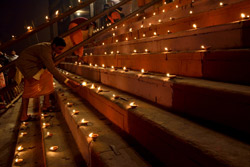 Watch out for special events happening nearby
Watch out for special events happening nearby
Where to go? Often, most successful travel photographers start at their own turf. Local festivals, markets, and events maybe local to you, but remember, a foreigner has to travel far for just the same subjects, so it makes great sense to start at home. The obvious advantages are - understanding of the regional language and culture, and familiarity with local people may get you rare opportunities that others may not.
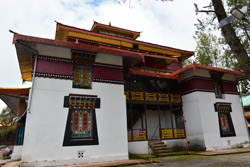 This monastery in Sikkim does not allow photography inside
This monastery in Sikkim does not allow photography inside
It's very important, even for local photographers to be aware of the yearly calendar of major events, and also of lesser known events. Once an event and the location are selected, one must get knowledge about the weather conditions during the planned shoot. Finding out about restrictions for photography and getting permissions if required are very vital for any travel shoot.
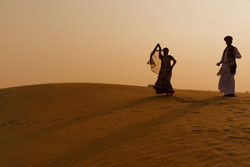 Sunrise and sunset timings are vital for planning your shoots
Sunrise and sunset timings are vital for planning your shoots
When shooting in unfamiliar territory, information is the key to success. Once a particular event or a location is locked in your mind, find out more from local people, preferably photographers. You can send messages on social media and usually you will get authentic information that you need for your planned shoot. One of the first things to find out is the sunrise and sunset timings, to make most of the available light.
If you are planning an elaborate shoot involving lots of equipment and travelling, it's always better to rely on professional tour operators, or better still, photo-tour operators who are well versed with the requirements of your shoot. This takes a lot off your mind and lets you concentrate on your images. Travelling with a friend or fellow photographers is often very helpful for travel photographers, more so for beginners.
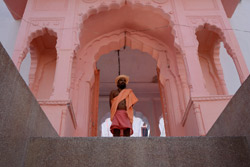 With local help you can discover off-beat locations
With local help you can discover off-beat locations
Where you stay can be important. Stay close to the action if you are covering an event or in a residential area if you are just exploring, to make most of your time.
Carrying too much equipment can slow you down and confuse you when the real moment comes, while carrying too little may make you miss opportunities. Pre-determine your shots while gathering information about the location. This will make it easier to choose what gear to carry. Usually travel photographers prefer short zooms. Having a telephoto zoom with a wide aperture like the 70-200 f/2.8 is very useful for those tight close ups and selective focusing. Light often being unpredictable, having an external flash always helps.
Carrying two bodies is not only a safeguard against equipment failure, but you can mount different lenses on both and be ready for any opportunity. You must carry enough memory cards and batteries, as remote locations may not have electricity to operate laptops. This should be one of the first things on your enquiry checklist.
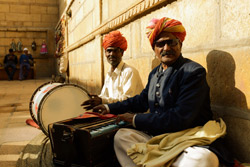 Walking around is the best way to explore a location
Walking around is the best way to explore a location
Go through many images of the location or event to get an idea what has already been shot. There's no point in ending up with done to death shots after investing time and money on a shoot. Plan to walk around instead of travelling by a vehicle. Find out a person who can go along with you as a local guide, and take you to interesting, off beat locations.
Before you pack up and lock your door, don't forget to check the latest news of the place you are headed for to ensure your trip goes as per plan.